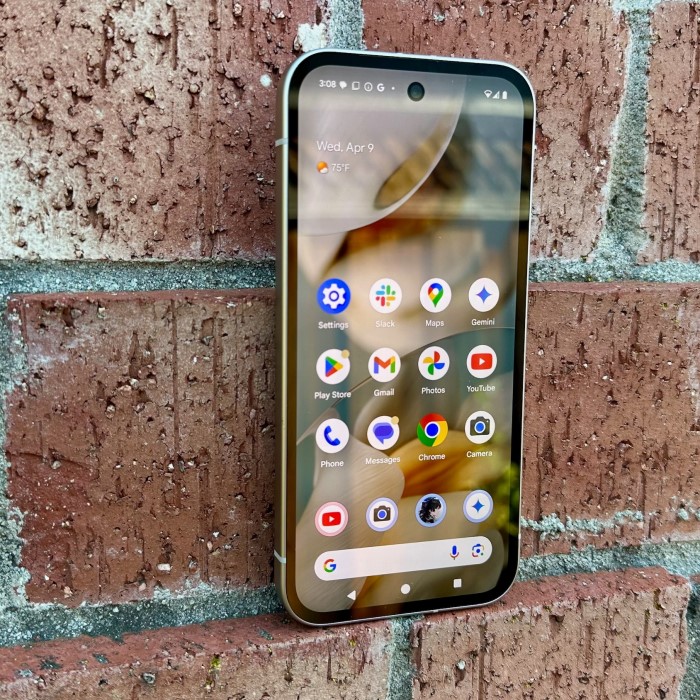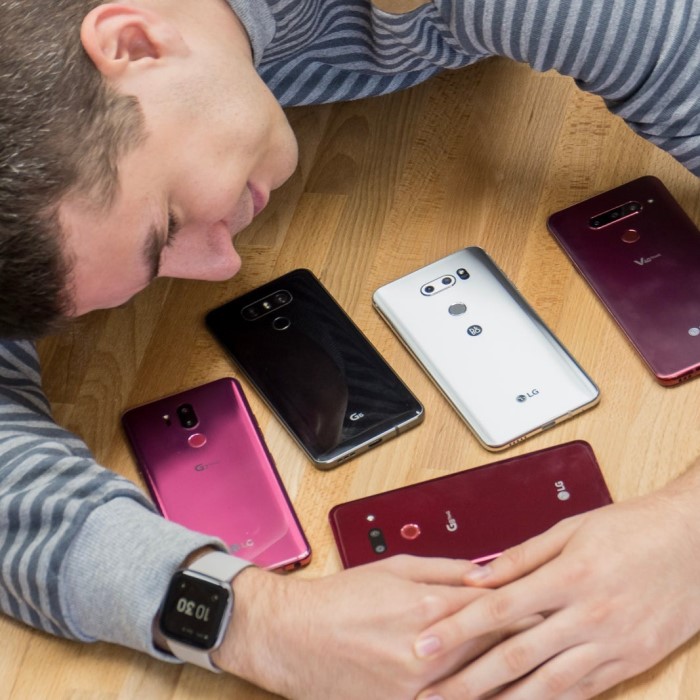Contents
- 1 Understanding the Need for a New Phone
- 2 Signs It’s Time to Replace Your Phone
- 3 Average Lifespan of Modern Smartphones
- 4 Advantages of Upgrading to a New Phone
- 5 Environmental and Financial Considerations
- 6 Alternatives to Buying a New Phone
- 7
- 8 Tips for Extending Your Phone’s Lifespan
- 9 Conclusion: The Importance of Smart Upgrading
Understanding the Need for a New Phone
In today’s fast-paced world, smartphones have become an integral part of our daily lives. With rapidly evolving technology, many users often wonder, how often should you get a new phone? It’s a common question, especially given the advancements in features such as camera quality, battery life, and processing power. Understanding the factors that dictate the need for a new device can help consumers make informed decisions about when to upgrade.

The typical lifespan of a smartphone can vary. While some devices perform well for a few years, others may become outdated quickly due to software updates or hardware failure. Thus, evaluating your usage habits and the performance of your current device is necessary before deciding on an upgrade.
Signs It’s Time to Replace Your Phone
Deciding when to replace your phone can be challenging. However, some clear signs indicate it’s time for an upgrade. These signs often impact the phone’s usability or functionality. Let’s explore these key factors:
Physical Damage or Broken Screen
A cracked or shattered screen is more than an aesthetic issue. It can interfere with touch responsiveness and display clarity. If repairs cost too much or aren’t feasible, it may be better to replace the phone.
Battery Life Issues
Diminished battery life is a common problem in older phones. Over time, batteries lose their ability to hold a charge. If your phone doesn’t last a full day even after moderate use, or if charging becomes inconsistent, it’s likely time to consider a replacement.
Outdated Software and Lack of Updates
Software updates maintain security and improve performance. If your phone stops receiving updates, it might be outdated. Lack of updates can leave your phone vulnerable to security threats and unable to support newer features.
Performance Problems and Slower Speed
Phones can slow down due to aging hardware or accumulated files. Lagging apps, frequent crashes, or delayed response times can interfere with daily tasks. If troubleshooting doesn’t resolve the issue, it may be worth upgrading.
Compatibility with Apps or Accessories
New apps and accessories often require the latest hardware or software. If you notice your phone no longer supports essential apps or accessories, it might be incompatible with modern technology. This can limit functionality and impact convenience.
Assess these signs carefully to determine if it’s time to replace your phone. Acting proactively can save time and frustration in the long run.

Average Lifespan of Modern Smartphones
Smartphones play a vital role in our daily lives. But how long do they typically last? Understanding the average lifespan is crucial when deciding on upgrades. Let’s delve into the key factors that affect smartphone longevity and compare the lifespans of flagship and budget phones.
Factors Affecting Smartphone Longevity
Several factors can influence how long a smartphone remains functional and relevant:
- Hardware Quality: High-quality components usually mean a longer-lasting phone. Flagship devices typically use better materials and processors.
- Software Support: Regular software updates enhance security and performance. Phones without updates become outdated faster.
- Battery Health: Over time, battery capacity diminishes. Frequent charging habits and poor battery management accelerate this process.
- Usage Patterns: Heavy usage for gaming or multitasking can strain the hardware, reducing its lifespan.
- Maintenance: Proper care, such as cleaning and using screen protectors, extends a phone’s usability.
- Environmental Conditions: Factors like heat and humidity can damage internal components if not handled properly.
By addressing these factors, you can potentially extend your smartphone’s lifespan.
Typical Timeframe for Flagship vs. Budget Phones
The lifespan of smartphones varies based on their price and build quality:
- Flagship Phones: High-end models often last 4 to 5 years. Their premium hardware and frequent software updates make them more durable.
- Budget Phones: Cheaper models generally last 2 to 3 years. Limited software support and lower-grade hardware reduce their longevity.
- Mid-range Phones: They fall between flagship and budget phones, offering 3 to 4 years of usability.
It’s essential to match your phone choice to your needs. If you value the latest features and durability, a flagship phone might be the better investment. Otherwise, budget options can serve well for a relatively short period.
Understanding these timelines helps answer the question, “How often should you get a new phone?” Proper decision-making saves money and reduces unnecessary upgrades.
Advantages of Upgrading to a New Phone
Upgrading your smartphone comes with several benefits. It addresses common problems in older devices, enhances daily functionality, and ensures compatibility with modern technology. Let’s explore key advantages.

Access to Latest Features and Technology
New phones offer cutting-edge features that improve user experience significantly:
Improved Cameras:
Advanced camera systems are a hallmark of today’s smartphones, enabling users to capture stunning images and videos.
Many modern devices feature multiple lenses, including ultra-wide, telephoto, and macro capabilities, allowing for a variety of photography styles and techniques.
Improved sensors and image processing software enhance low-light performance, resulting in clearer and more vibrant photos even in challenging lighting conditions.
Additionally, features like optical image stabilization (OIS) help to reduce blurriness caused by shaky hands, ensuring sharper images and smoother video recording.
Faster Processors:
Modern devices are equipped with powerful processors designed to handle tasks more efficiently than ever before.
These advanced chips enhance overall performance, reducing loading times for applications and improving gaming experiences by offering higher frame rates.
With faster processors, smartphones can smoothly multitask, enabling users to switch between applications seamlessly without noticeable lag.
This capability is particularly beneficial for resource-intensive tasks such as video editing, gaming, and running demanding applications, providing a more enjoyable user experience.
Larger Displays:
Bigger screens have become a standard feature in new smartphones, significantly enhancing the usability and enjoyment of the device.
A larger display ensures better visibility, making it easier to read text, view images, and watch videos without straining the eyes.
For gaming enthusiasts, bigger screens provide a more immersive experience, allowing users to fully engage with the game environment.
Additionally, larger displays facilitate more productive use of apps, such as productivity tools and spreadsheets, by providing more screen real estate for viewing content.
5G Connectivity:
Many new smartphone models are designed to support 5G networks, offering ultra-fast internet speeds that significantly enhance online experiences.
With 5G connectivity, users can enjoy quicker downloads and uploads, making it easier to stream high-definition content and participate in video calls with minimal latency.
This capability opens up new opportunities for mobile gaming, allowing for real-time gameplay without interruptions or lag.
Moreover, 5G technology supports a higher number of connected devices, enabling users to seamlessly integrate more smart technology into their lives.
Enhanced AI Capabilities:
Artificial intelligence (AI) features have become integral to modern smartphones, personalizing the user experience while optimizing device performance.
AI technologies are employed in various functionalities, from voice assistants that respond to user commands to camera enhancements that automatically adjust settings for the best shot.
Machine learning algorithms analyze user behavior, allowing the device to anticipate needs, streamline tasks, and recommend apps or actions based on usage patterns.
Additionally, enhanced AI capabilities can improve battery management, enabling devices to learn when to conserve power, ultimately extending battery life.
Accessing these innovations enhances productivity, entertainment, and communication in your daily life.

Improved Performance and Efficiency
New phones are designed to run faster and better than older models. They reduce frustrations caused by aging hardware and software. Benefits include:
- Faster App Launches: Apps open and operate smoothly without delays.
- Improved Battery Efficiency: New batteries last longer, even with heavy use.
- Reliable Connections: Wi-Fi and Bluetooth functions operate more consistently.
- Greater Storage: Increased storage ensures you can save more apps, photos, and files.
Upgrading ensures your device keeps pace with your daily needs and reduces time spent troubleshooting.
Enhanced Security and Software Support
Security threats evolve, making older phones more vulnerable. New devices address these issues:
- Regular Updates: Manufacturers release updates that protect against emerging threats.
- Advanced Security Features: Facial recognition and fingerprint scanners improve phone security.
- Support for New Apps: Latest software capabilities enable better functionality for apps and services.
By upgrading, you ensure your data remains protected, and you stay current with technological advances.
Considering these advantages, upgrading your phone can deliver major improvements to your life and routine.
Environmental and Financial Considerations
When upgrading your phone, consider environmental and financial impacts. Making thoughtful decisions helps reduce waste and saves money.
Impact of E-Waste and Recycling Options
E-waste is a major environmental problem. Millions of phones are discarded each year, contributing to waste.
- Harmful Components: Old phones contain toxic materials like lead and mercury. Improper disposal harms the environment.
- Recycling Programs: Many manufacturers and retailers offer recycling services. You can safely recycle your old device.
- Benefits of Recycling: Recycling reduces waste and allows raw materials to be reused. This supports sustainability.
Avoid throwing old phones in the trash. Check for local recycling programs or trade-in opportunities.
Budget-Friendly Tips for Upgrading Your Phone
Upgrading doesn’t have to break the bank. Follow these tips for affordable smartphone upgrades:
- Research Deals: Look for discounts, sales, and trade-in programs. They can lower the cost significantly.
- Consider Refurbished Phones: Refurbished devices are cheaper and often come with warranties.
- Buy at the Right Time: Upgrade during major sales events, such as Black Friday or holiday discounts.
- Choose Mid-Range Models: Mid-range smartphones provide good performance without high costs.
- Avoid Unnecessary Features: Select a phone that meets your needs. Skip extras you won’t use.
Use these tips to save money while finding a device that fits your lifestyle. Every dollar saved makes upgrading more worthwhile.
Alternatives to Buying a New Phone
Upgrading your phone isn’t always necessary. Alternatives like repairs or refurbished phones can save money. Let’s explore these options in detail.
Repair vs. Replacement: When It’s Worth It
Repairing a phone can be cheaper than replacing it. However, it depends on the damage:
- Minor Issues: Problems like cracked screens or weak batteries are often repairable.
- Cost vs. Benefit: If repair costs exceed half the phone’s value, replacement may be better.
- Availability of Parts: Older models may lack repair parts, making fixes difficult.
- Impact on Longevity: Repairs can extend your phone’s lifespan, but only for a few years.
Consider repairs when the phone is functional but needs minor fixes. Replacement suits severe issues or outdated devices.
Refurbished Phones as a Cost-Effective Option
Refurbished phones provide an affordable way to get a nearly-new device. Here’s why they’re worth considering:
- Lower Prices: Refurbished phones usually cost much less than new models.
- Quality Assurance: Many come with warranties, ensuring proper functionality.
- Eco-Friendly Choice: Buying refurbished reduces e-waste and promotes sustainability.
- Wide Selection: Many models, including past flagship phones, are available refurbished.
Check for certified refurbishers to ensure quality. This option is perfect for buyers seeking value.
Tips for Extending Your Phone’s Lifespan
Smartphones are significant investments. With proper care, you can maximize their usability and shelf life. Here are some essential tips to keep your phone running longer.
Regular Maintenance and Cleaning
Maintaining cleanliness helps your phone operate efficiently and prevents hardware damage.
- Clean the Screen and Body: Wipe your phone with a microfiber cloth often. It removes dirt and smudges.
- Avoid Dust in Ports: Use a soft brush or compressed air to clean charging ports and headphone jacks.
- Delete Unnecessary Files: Clear apps and files you don’t use to free up storage.
- Check For Malware: Install a trusted antivirus app to prevent harmful software from affecting your phone.
These small cleaning habits improve the phone’s longevity and keep it looking new.
Proper Charging Habits to Preserve Battery Life
A healthy battery is vital for extending your phone’s lifespan. Follow these simple tips:
- Avoid Extreme Charging: Keep the battery level between 20% and 80%. Avoid letting it die or overcharge.
- Use the Original Charger: Manufacturers design their chargers to optimize your battery’s health.
- Avoid Overnight Charging: Excessive charging can lead to overheating and degrade the battery.
- Turn Off Unused Features: Disable Bluetooth, location, or apps running in the background when they’re not needed.
Proper charging habits help maintain battery capacity over the years.
Protecting Your Phone with Cases and Screen Protectors
Physical protection is crucial to prevent costly damage.
- Case Protection: Use a durable and shock-absorbent case to protect your phone from impacts.
- Screen Protectors: Apply a tempered glass or film to prevent scratches and cracks.
- Avoid Water Damage: Use water-resistant cases if you work near wet conditions or outdoor environments.
- Prevent Overheating: Keep your phone away from direct sunlight or heat sources.
Investing in protection accessories safeguards your phone and reduces repair or replacement costs.
By practicing regular maintenance, mindful charging, and using protective gear, you can extend your phone’s life while saving money.
Conclusion: The Importance of Smart Upgrading
To conclude, deciding how often should you get a new phone involves evaluating multiple factors such as performance, age, and personal needs. By understanding the signs that indicate it’s time for an upgrade, consumers can make more informed choices while shopping for new devices. Furthermore, keeping the guidelines in mind for maintaining your phone can help extend its lifespan, delaying the need for a new purchase.
Ultimately, staying informed about trends and technology advancements will ensure that you are not only aware of when to upgrade but also how to make the most of your smartphone investment. Stay connected, protect your device, and enjoy every moment you have with your smartphone.

